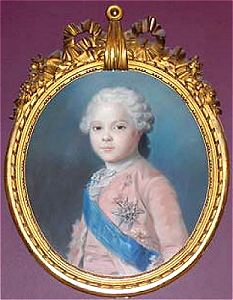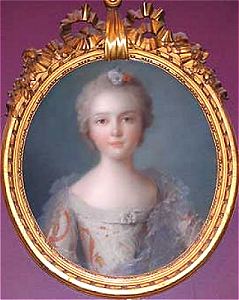 |
 |
Louis, Dauhin of France, Young Lady
After: Pastels on paper, c. 1855 From: "The Pages" |
ARTIST:
La Tour was one of the greatest pastellists of the 18th c.; he did no work in oils. Reacting against the stately portraits of preceding generations and mythologic ones by his contemporaries, he returned to more realistic work that suggested the temperament and psychology of his subjects.
After studying drawing in St Quentin, his birthplace, he went to Paris and worked under three painters. His admiration for Rosalba Carriera, who visited there in 1720, led La Tour to devote his efforts solely to pastels. In 1746 he became a full member of the Académie Royale, and in 1750 was named painter to the king.
His considerable success led to commissions from the royal family, court, wealthy bourgeoisie and those in literary, artistic, and theatric circles. His oeuvre was extensive: over 1200 works. Toward the end of his life La Tour began to put his considerable fortune to philanthropic use. He endowed three student prizes, and gave money to his home town for relief of indigent craftsmen and poor women in childbirth. In 1752 he established an École Royale de Dessin, also in St. Quentin, and later donated a major part of his oeuvre to the school.
SUBJECTS:
When La Tour portrayed influential figures of State, he drew the subject’s face in a highly idealized manner. Can one assume that the young Dauphin was similarly treated? He is dressed as for a state portrait, complete with the Order and diagonal sash. His hair is covered with the powdered wig as worn by adults.
The young lady may also be a member of the royal family. She, too, is both formally dressed and posed.
PAINTINGS:
In any case, La Tour always concentrated on the sitter’s smile and the expression in the eyes. He was also passionately interested in the simple oval of the face – which he often drew in isolation, without any context, somewhat in the manner of a mask.
La Tour began with a series of preparatory studies, often as many as four or five for a single portrait. He was superbly skilled in reproducing textures – silks, velvets, brocades, lace, etc., and of course the medium of pastel lends itself naturally to reproducing the velvety surface of skin.
Both of these works were given to the Museum as gifts in memoriam.